2020-03-05
Lithium battery refers to the general term of lithium metal battery and lithium-ion battery. Generally speaking, lithium battery is lithium-ion battery, which is characterized by no metallic lithium and supports repeated charge and discharge.
From the first commercial lithium-ion battery launched by Sony in 1991, to the large-scale use of lithium batteries by Huawei in communication base stations in 2009, to the explosion of electric vehicle (lithium battery) market in 2016, at present, the sales of power batteries of the world's top ten lithium battery manufacturers are close to 90gwh.
With the continuous improvement of the energy density and safety performance of lithium-ion batteries and the continuous reduction of the cost, lithium batteries are in increasing demand in the fields of communication, electric power, power vehicles, data centers and so on. Lithium batteries are steadily moving towards becoming a new generation of mainstream energy.
Lead acid batteries have dominated the communication industry for decades. However, lead-acid batteries have short cycle life, large land occupation, high requirements for the load-bearing of machine rooms, and the production process is easy to cause environmental pollution. The development of lead-acid batteries in various countries tends to shrink. China's iron towers have made it clear that lead-acid batteries will not be invited for bidding. Lithium batteries naturally have advantages that lead-acid does not have, such as high energy density, small footprint, long cycle life and so on. With the rapid decline of the market share of lead-acid batteries, the application of lithium batteries in the world has increased sharply, in which 5g sites are almost covered by lithium batteries, and the lithium battery applications in data centers are also being used on a large scale by some large ISP customers abroad. It can be predicted that the market share of lithium batteries will approach or exceed that of lead-acid batteries in the next 3-5 years. It is a consensus in all fields that lithium batteries will dominate the market in the future.
1. Class 3C: lithium cobalt oxide increases the upper limit of charging voltage and continuously increases energy density; It is expected that after 2025, the voltage of all solid electrolyte can be further increased, gradually approaching the theoretical upper limit of 4.9v
2. Power: high end EV: ternary (liquid) increases Ni content, charging voltage increases energy density, and the energy density does not increase significantly after Ni content (811) and voltage (4.25); In the future, solid-state electrolytes are expected to be commercially available after 2025, and the voltage can be further improved; Medium and low-end EV bus: turn to iron lithium route
3. Circulating energy storage: lithium iron phosphate: the gram capacity of the material (currently 155mah/g) is close to the theoretical limit (172mah/g), and the voltage rise has reached the limit; It mainly evolves to circulation and safety features; Sodium ion battery is a potential option in the future: cheap raw materials, reusable lithium battery industry chain;
4. Short time standby power: lithium iron phosphate, with the best safety, service life and cost performance, evolves to the characteristics of power density improvement and safety; The future is expected to be battery capacitance and other composite routes
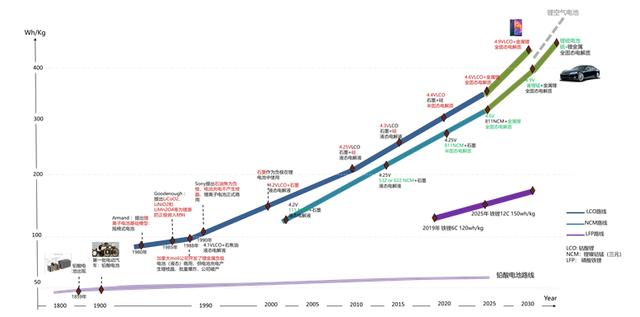
Figure 1: battery development technology route
Basic parameter concept of lithium battery
Battery capacity (ah): the amount of electricity discharged by the battery under certain conditions (discharge rate, temperature, termination voltage, etc.), usually in ampere hours.
Charge discharge ratio (c): charge discharge ratio = charge discharge current / rated capacity.
Introduction to the working principle of lithium battery
Lithium ion batteries generally use lithium alloy metal oxide as cathode material, graphite as cathode material and non-aqueous electrolyte.
Cathode materials: there are many cathode materials available, and the mainstream products are lithium iron phosphate and ternary (nickel cobalt manganese or nickel cobalt aluminum).
Anode material: mostly graphite.
Take lithium iron phosphate battery as an example:
Positive electrode reaction: lithium ion is embedded during discharge, and lithium ion is de embedded during charging.
During charging: LiFePO4 → li1-xfepo4 XLI Xe-
During discharge: li1-xfepo4 XLI xe- → LiFePO4
Negative electrode reaction: lithium ion de intercalation during discharge and lithium ion intercalation during charging.
During charging: XLI xe- 6C → lixc6
Discharge: lixc6 → XLI xe- 6C
Types of lithium batteries (generally classified according to cathode materials)
Lithium cobalt oxide (LCO)
Lithium manganate (LMO)
Lithium iron phosphate (LFP)
Lithium ternary (NCM)
Lithium iron phosphate "goodenough"
The 2019 Nobel Prize in chemistry was awarded to John B goodenough, m.stanley Whittingham and Akira Yoshino for their contributions to the development of lithium-ion batteries.
In particular, John goodenough has become the oldest Nobel Prize winner in history, and his exploration of lithium batteries in his life is particularly admirable. As one of his important contributions, lithium iron phosphate (LFP) is also considered to be the safest and most environmentally friendly cathode material for lithium-ion batteries at present.
The application of lithium batteries, especially lithium iron phosphate, in data centers and communication base stations is as goodenough as the old man's name.
At present, the mainstream lithium batteries in the industry are divided into lithium cobalt oxide, lithium manganate, lithium iron phosphate and lithium ternary. Lithium cobalt oxide is mainly used in mobile phone battery industry; Lithium manganate is mainly used in the electric bicycle industry; Lithium iron phosphate is widely used in bus / bus energy storage and energy storage power stations; Lithium ternary is widely used in household car / taxi energy storage and energy storage power station industry. At present, lithium iron phosphate and lithium ternary are widely used in data center scenarios. Lithium iron phosphate has higher reliability and lithium ternary has advantages in energy density.
1. Lithium iron phosphate structure is more stable
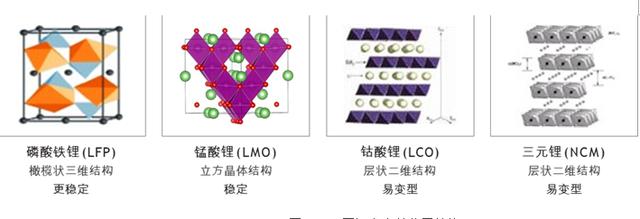
Figure 2: molecular structure of different lithium battery cells
Source: SOROOSH SHARIFI ASL, et al., oxygen release degradation in Li ion battery category materials: mechanisms and migrating approvalsAdv. Energy Mater. 2019, 1900551
From the perspective of molecular structure, the molecular structure of lithium iron phosphate is olive shaped three-dimensional structure, while the molecular structures of lithium cobalt oxide and lithium ternary are layered two-dimensional structures, and the 2D layered structure is easy to collapse. Relatively speaking, the molecular structure of lithium iron phosphate is more stable.
2. Lithium iron phosphate has high thermal stability, slow heat production rate and less heat production
• lithium iron phosphate is stable at high temperature, and the high-temperature heat generation peak is not obvious, and the peak heat generation power is only about 1W
• at high temperature or high pressure, ternary oxygen is easy to separate out, which intensifies combustion. The peak heat work rate is about 80w/min, which is easy to trigger explosive combustion (second level), and the system is difficult to react and control
• in terms of total heat production, lithium iron phosphate is significantly lower than ternary, lithium manganate and other materials (the area of heat production power curve and horizontal axis represents the total heat production)
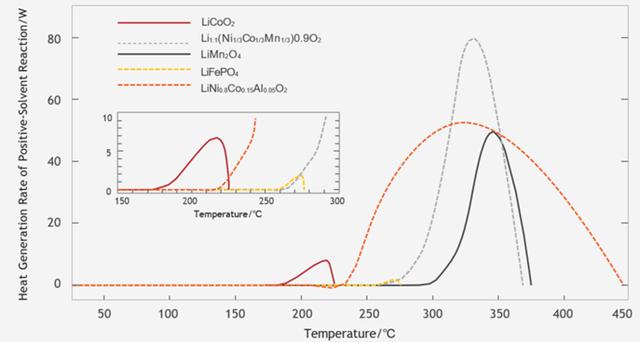
Figure 3: comparison curve of heat production of different lithium batteries at high temperature
Source: P. Peng, F. jiang, Thermal safety of lithium-ion batteries with various cathode materials: A numerical study.
International Journal of Heat and Mass Transfer. 103 (2016) 1008–1016
3. Lithium iron phosphate thermal runaway reaction does not produce combustion supporting agent
Lithium iron phosphate will not produce oxygen after thermal runaway, while lithium manganate, lithium cobalt oxide and ternary lithium will produce oxygen after thermal runaway, so it is easier to catch fire.
The temperature required for thermal runaway of lithium iron phosphate is higher. Relatively speaking, the temperature required for thermal runaway of lithium manganate, lithium cobalt oxide and ternary lithium are far lower than that of lithium iron phosphate.

Figure 4: comparison of electrothermal runaway reactions of different lithium
1. Cost is the bottleneck, but the future can be expected
With the extensive use of lithium batteries in electric vehicles, industrial energy storage, terminal equipment and other industries, as well as the establishment of the ecosystem of the whole industry, the cost of lithium batteries is declining year by year, while the cost of lead-acid batteries (including lead) is high and low, and the cost will rise in the future. Therefore, in the near future, the cost advantage of lithium battery will become more obvious, and lithium battery will be applied in data centers on a large scale. However, at present, due to the uneven brands and price levels of lead-acid in the industry, we still feel that lithium batteries are more expensive than lead-acid.
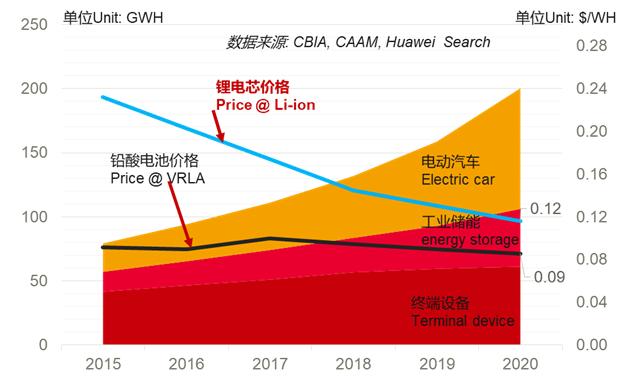
Figure 5: price trend of lithium battery and lead acid
Data source: CBIA, CAAM, Huawei search
2. Reliability is still the biggest obstacle to lithium battery application in the future
Although lithium batteries are widely used, there are accidents such as overheating, out of control and fire in both electric vehicles and mobile phones. In the data center, the requirements for reliability are higher. In case of fire, the entire data center business may suffer serious losses.
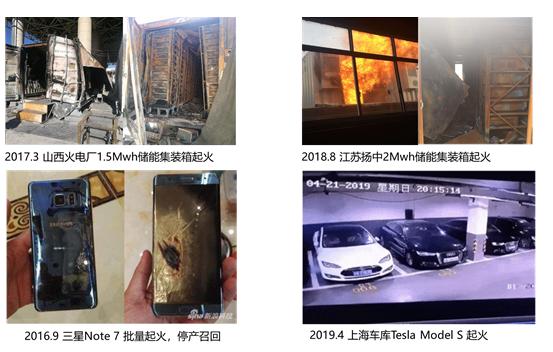
Figure 6: lithium electric heating out of control fire case
Safety assurance of lithium battery application in data center
1. Root cause of lithium battery safety
Many exothermic side reactions occur in the battery under the condition of over temperature and over pressure, and then form positive heat feedback, resulting in thermal runaway, high temperature and a large number of combustible gases, and then combustion.
The root cause of uncontrolled fever under the stimulation of mechanical, electrical and thermal excitation sources.

Figure 7: root cause of lithium electric heating out of control and fire
2. Lithium battery safety guarantee
From the lithium-ion battery fire accidents in recent years (such as Note7, Tesla, etc.), it can be summarized as internal short circuit, lithium precipitation, high temperature, volume change caused fire and explosion.
However, the choice of lithium iron phosphate as the cell is not foolproof. Therefore, in the design and application of lithium battery, the safety of lithium battery should be guaranteed from multiple levels, such as battery pack BMS system cloud computing / big data, so as to minimize the thermal runaway and fire accident of lithium battery.
(1) Selection of cell material system: lithium iron phosphate is preferred. The temperature point of thermal runaway is high, the rate of heat production is slow, and the total amount of heat production is small, fundamentally ensuring safety
(2) Safety design of electric cell structure: the mechanical structure is cut off in time to inhibit the temperature rise; Coating inhibits thermal runaway
• mechanical structure: external short circuit and overcharge abuse, cut off in time through fuse, OSD and other mechanical structures, inhibit temperature rise, and prevent chain reaction to thermal runaway;
• functional coating (chemical protection): in case of internal short circuit, the mechanical structure does not work, and the functional coating inhibits the shrinkage of the isolation film to avoid large-area short circuit;
(3) Battery module pack safety design: the overall design of battery module pack starts from two layers and four points. such as
• laser welding avoids the risk of screw loosening
• multiple temperature sensors ensure real-time monitoring of temperature and voltage in the module
• clamping force ensures structural stability
• insulation protection board protects positive and negative terminals
• plastic insulation support to ensure insulation and structural strength between cores
• the insulation film on the surface of the core is coated to ensure the insulation between the core and the outside

Technical process of lithium battery module installation design
(4) BMS safety design: three-level BMS architecture, conventional V, I, t sampling detection, equalization, threshold alarm protection, internal short circuit algorithm, internal temperature estimation calculation method, lithium estimation algorithm, to ensure that the cell does not have thermal runaway
(5) System safety design:
• intelligent battery control system, so that a single group of voltage, current and power can be controlled to avoid bias current and circulation
• cabinet level fire protection system, which can achieve rapid suppression of thermal runaway, accuracy, efficiency and environmental protection
(6) AI intelligent security assurance: upload key data to the cloud, monitor the battery status in real time, and conduct monthly / daily security warning in advance through horizontal and vertical comparison of database security algorithm analysis
In addition to solving the problems of reliability and cost, users still have many problems in the application of lithium batteries in data centers, which will also become the key consideration for the large-scale application of lithium batteries in the future.
Challenge 1: current sharing of multi cabinet consolidation,When multiple cabinets are discharged in parallel, the uneven discharge current between cabinets is caused by the inconsistency of internal resistance and capacity of electric cells, and the difference of power distribution, especially in the case of short-term high current discharge,Cause overcurrent protection of battery cabinets one by one.
Challenge 2: online capacity expansion of old and new battery cabinets,The problem of partial failure rate cannot be avoided in the application of lithium battery system; Or the demand for capacity expansion due to load increase; There will be a scenario where the old and new battery cabinets are used in parallel. The internal resistance and capacity of the new and old battery cabinets are inconsistent, which will lead toSevere bias current, even causing overcurrent disconnection of single battery cabinet.
Challenge 3: voltage equalization of cells in series,The internal resistance capacity of cells in a single battery is inconsistent, resulting in over-voltage charging of single cells,Make the whole battery system unable to be fully charged。
Challenge 4: maintenance problems,A battery module in a single string battery pack fails, causing the whole battery to fail to work normally,How to maintain and replace quickly.
Challenge 5: fire protection,When lithium battery is listed in the micro module data room, if there is a fire in the lithium battery cabinet,How to control the fire inside the cabinet and not spread to the surrounding ICT equipment?
Compared with lead acid, lithium battery has natural advantages such as low load-bearing requirements, small land occupation, high energy density and long cycle life. Therefore, in the future, with the further reduction of the cost of lithium battery, lithium battery will be widely used in data centers. In terms of safety assurance, it is preferred to recommend the use of lithium iron phosphate high stability battery cells. Secondly, it is necessary to ensure the safe application of lithium batteries from the aspects of pack, BMS, system and so on. However, facts speak louder than words. The reliability and practical application of lithium batteries need to stand the test, and the large number of applications of lithium batteries in data centers need to stand the market verification.
Article source:Huawei enterprise business
0755-89480969
info@powercome.hk
B1202, building 1, Mogen Fashion Industrial Park, No. 10, shilongzi Road, Xinshi community, Dalang street, Longhua District, Shenzhen
www.powercome.hk